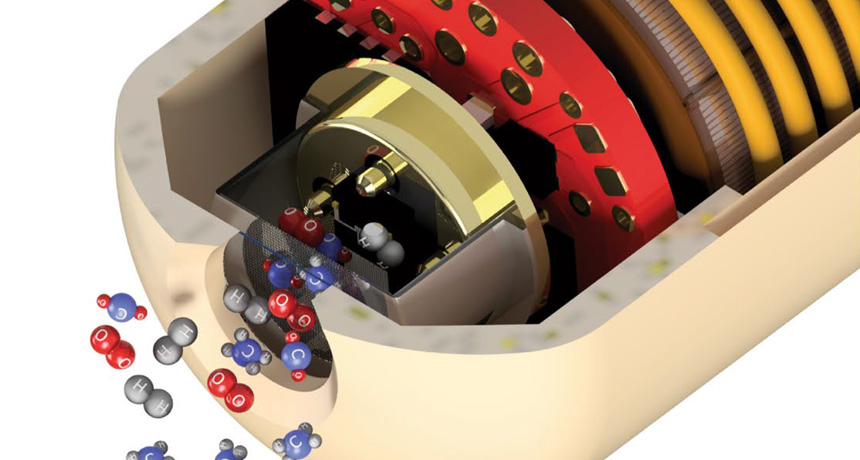
GUT CHECK A plastic capsule containing instruments to sense various gut gases (illustrated) could help diagnose or monitor treatments for gastrointestinal problems.
K. Kalantar-Zadeh et al/Nature Electronics 2018

GUT CHECK A plastic capsule containing instruments to sense various gut gases (illustrated) could help diagnose or monitor treatments for gastrointestinal problems.
K. Kalantar-Zadeh et al/Nature Electronics 2018